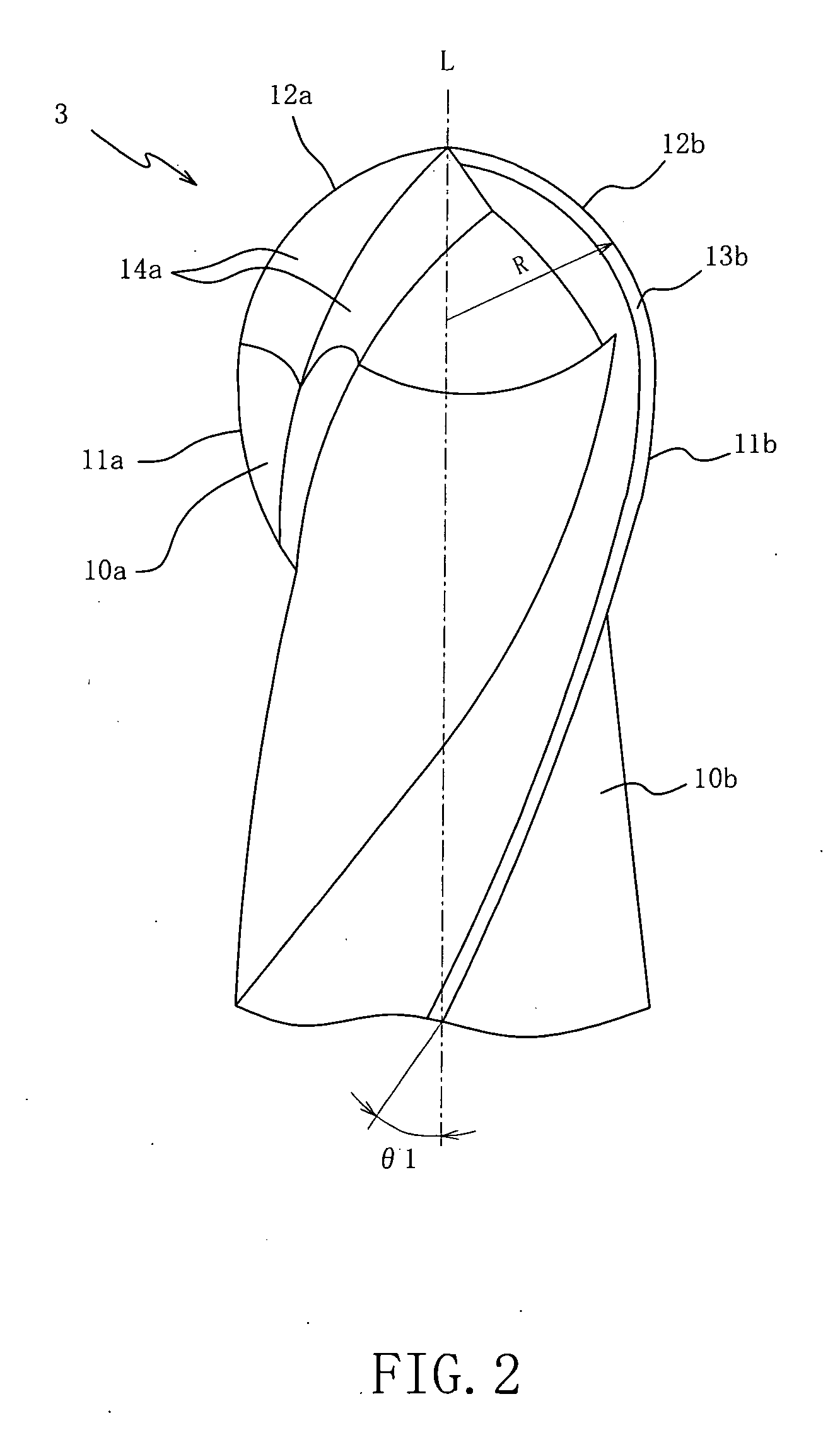Ball endmill
a ball endmill and ball mill technology, which is applied in the direction of workpieces, milling equipment, metal-working equipment, etc., can solve the problems of inability to achieve a sufficiently high machining efficiency, the above-described ball endmill is not capable of machining a workpiece at a high speed or with a large cut depth, etc., to achieve a higher speed, improve machining efficiency, and increase the depth
- Summary
- Abstract
- Description
- Claims
- Application Information
AI Technical Summary
Benefits of technology
Problems solved by technology
Method used
Image
Examples
Embodiment Construction
[0036] Hereinafter, a preferred embodiment of the present invention will be described with reference to the drawings. FIG. 1 is a front elevational view of a multi-flute ball endmill 1 (hereinafter simply referred to as “ball endmill”) according to the embodiment of the invention. FIG. 2 is an enlarged view of a distal end portion (right-side portion as seen in FIG. 1) of the ball endmill 1. FIG. 3 is a side view of the ball endmill 1 as seen in a direction of arrow II of FIG. 1. Referring first to FIGS. 1-3, there will be described a whole construction of the ball endmill 1.
[0037] The ball endmill 1 is principally constituted by a tool body 2 having an axis L and including a blade portion 3 and a shank portion 2a that are coaxial with each other. This ball endmill 1 is to be used for cutting or machining a workpiece so as to finish a free curved surface or rounded corner section surface of a die or molding. In a machining operation, the ball endmill 1 is attached to a machine tool...
PUM
 Login to View More
Login to View More Abstract
Description
Claims
Application Information
 Login to View More
Login to View More - R&D
- Intellectual Property
- Life Sciences
- Materials
- Tech Scout
- Unparalleled Data Quality
- Higher Quality Content
- 60% Fewer Hallucinations
Browse by: Latest US Patents, China's latest patents, Technical Efficacy Thesaurus, Application Domain, Technology Topic, Popular Technical Reports.
© 2025 PatSnap. All rights reserved.Legal|Privacy policy|Modern Slavery Act Transparency Statement|Sitemap|About US| Contact US: help@patsnap.com



